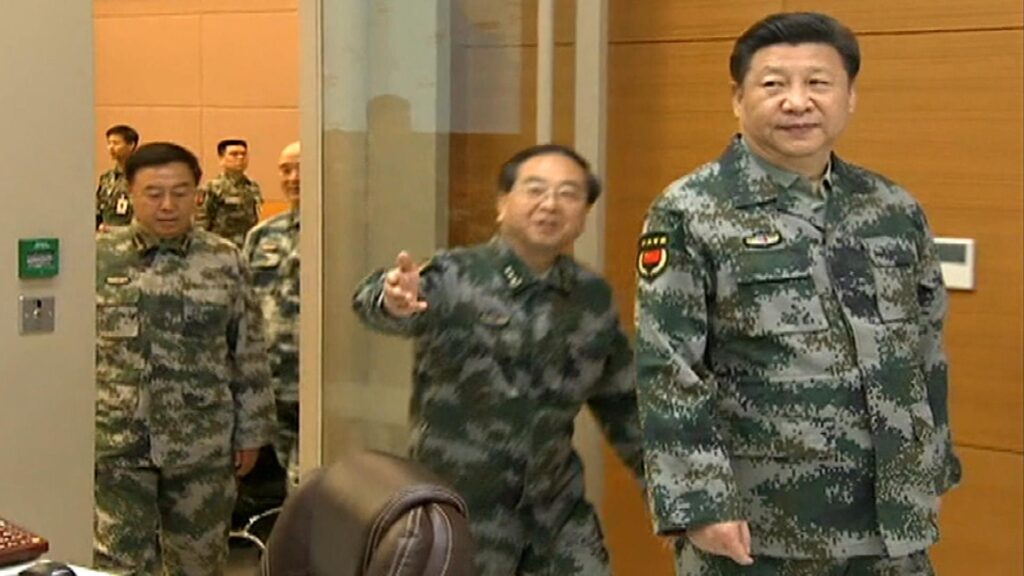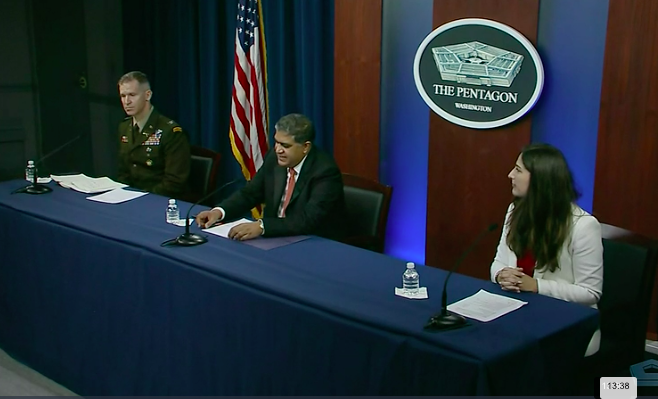
Chinese president Xi Jinping in military uniform.
WASHINGTON: China may lead the world in some aspects of artificial intelligence, such as surveillance and censorship. But in the ways that matter most for future warfare, “the US is still ahead compared to China [in terms of] sophistication and breadth,” says the acting director of the Pentagon’s Joint AI Center.

Nand Mulchandani
“The question becomes, how can we quickly adopt this and bring this into the DoD?” Nand Mulchandani asked. It’s not the US Department of Defense that’s leading the world on AI – although there are definitely some clever coders in the DoD – but American companies, which have invested massively in cutting-edge techniques driven by such mundane missions as targeting online advertising. “[We’re] absorbing and wielding it, as opposed to building it from scratch,” he said, and that’s a big advantage.
“I remember five years ago, people said by 2020 China would be ahead of us in artificial intelligence. I don’t think they are,” the Vice-Chairman of the Joint Chiefs, Gen. John Hyten, told a JAIC-hosted public conference yesterday. “It’s the work that’s going on across this entire country, all of our industry is involved in that, and that’s what’s keeping our advantage.”

Gen. John Hyten
Mulchandani agrees with Hyten that the US software industry is America’s edge, saying he, “would argue any day of the week that we have the preeminent talent, the industry, the partners and the tech, The DoD has access to all those technologies and partnerships and relationships.”
Does it, really? The Pentagon’s first high-profile military AI, Project Maven, made headlines in 2018 when Google very publicly opted not to renew its contract for what many employees objected to as an unethical use of their work. Even tech companies with no such qualms have often found government bureaucracy a nightmare to do business with.
But Google and other major companies are doing business with the JAIC now, and when it held its online conference this week, more than 3,000 people signed up to participate, many of them from the private sector.
All told, “the JAIC is now working with more than 120 companies serving as prime and subprime vendors for its AI projects,” said Mulchandani’s boss, DoD CIO Dana Deasy, in an address to the virtual conference this morning. “With the many tech firms represented here today and those contracted to develop AI projects for the DoD, I truly believe we have turned the corner for a new era of cooperation.”

L-R: Col. Brad Boyd, Nand Mulchandani, and Jane Pinelis
“AI is not a monolithic single piece of technology,” Mulchandani said this morning. “Saying that one country’s ahead or behind in aggregate is hard…You have to take it on an individual technology basis.”
China has invested heavily in the specific needs of an authoritarian regime, like “video image recognition for population control, or Great Firewall content filtering,” he said. “At the DoD, we’re focused on military and warfighting capabilities.”
For those purposes, added JAIC’s Chief of Warfighting Operations, Army infantry Col. Brad Boyd, “frankly we have the best data sets in the world.” After 19 years of nonstop combat worldwide, in fact, the American military’s problem is actually too much data that’s too poorly organized and archived. “The DoD leave a lot of data on the floor,” Boyd said. “We’re constantly generating data; we’re not collecting it and curating it” – which is something JAIC aims to fix.
China, for its part, is also collecting masses of data, but it’s curating it largely by “brute force,” said Jane Pinelis, JAIC’s chief of testing and evaluation. The Chinese are “just having so many people sitting in front of their computers and labeling” data by hand, he said. “We’re working with academia and industry [on automation] to circumvent that process.”
“There’s a tendency to focus on the algorithm and the application,” Boyd added, “but the decisive aspect of AI for warfare is honestly going to be all the unsexy stuff: the integration of the infrastructure, the ability to move and curate data… That’s where the hard work is.”
While JAIC stands for Joint Artificial Intelligence Center, Mulchandani joked, it “sometimes become the ‘joint data and plumbing center’ to get all the [underlying] systems right first, upon which we can [then] build the AI.” There’s a big glamor gap, he laughed, between “what we’re called and what we do.”
Global interest in Iranian drones unlikely to wane despite failed attack on Israel
Though virtually none of the estimated 170 drones Iran launched at Israel got through defenses, analysts told Breaking Defense there’s an eager market globally for Tehran’s relatively cheap, normally effective UAVs.



























